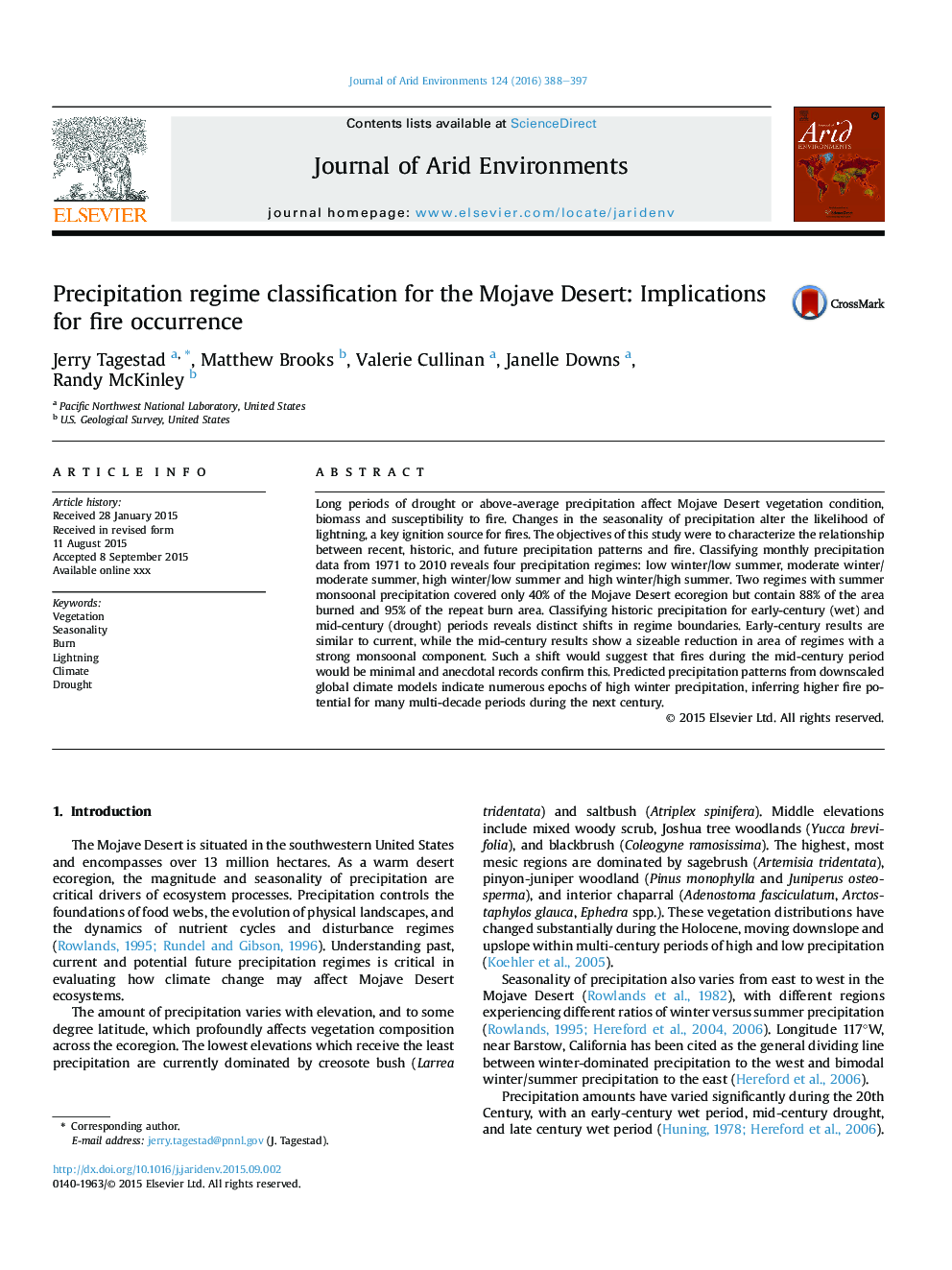| Article ID | Journal | Published Year | Pages | File Type |
|---|---|---|---|---|
| 6303352 | Journal of Arid Environments | 2016 | 10 Pages |
Abstract
Long periods of drought or above-average precipitation affect Mojave Desert vegetation condition, biomass and susceptibility to fire. Changes in the seasonality of precipitation alter the likelihood of lightning, a key ignition source for fires. The objectives of this study were to characterize the relationship between recent, historic, and future precipitation patterns and fire. Classifying monthly precipitation data from 1971 to 2010 reveals four precipitation regimes: low winter/low summer, moderate winter/moderate summer, high winter/low summer and high winter/high summer. Two regimes with summer monsoonal precipitation covered only 40% of the Mojave Desert ecoregion but contain 88% of the area burned and 95% of the repeat burn area. Classifying historic precipitation for early-century (wet) and mid-century (drought) periods reveals distinct shifts in regime boundaries. Early-century results are similar to current, while the mid-century results show a sizeable reduction in area of regimes with a strong monsoonal component. Such a shift would suggest that fires during the mid-century period would be minimal and anecdotal records confirm this. Predicted precipitation patterns from downscaled global climate models indicate numerous epochs of high winter precipitation, inferring higher fire potential for many multi-decade periods during the next century.
Related Topics
Physical Sciences and Engineering
Earth and Planetary Sciences
Earth-Surface Processes
Authors
Jerry Tagestad, Matthew Brooks, Valerie Cullinan, Janelle Downs, Randy McKinley,
